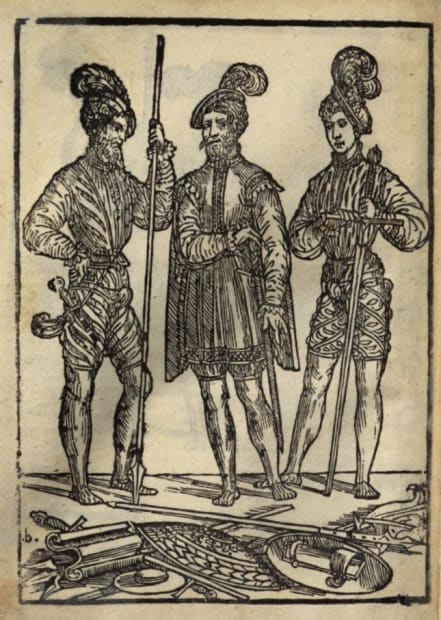-

-
-
On the trail opened by these simple observations, an attempt to identify the sitter can nevertheless be hazarded thanks also to the precious advice given to us by Mr. Mario Scalini, whom we sincerely thank here, at the time we first presented the painting in Florence at the Biennale Internazionale di Palazzo Corsini (September 2022).
-

-
-
-
-
A fascinating hypothesis, in search of confirmation.
Two other points, however, seem to indicate our hypothesis as correct.
-
-
The other point is the silk of his garments, of an iridescent, almost dazzling whiteness.
In addition to running his fencing school, Marozzo owned a silk-processing factory in Bologna.
On 9 June 1531, the Bologna city council granted 'Achilli de Marociis quondam Ludovici artis gladiatorie magistro' permission to build a moulin to extract two and a half ounces of water from the Reno canal – in the same district of his residence and school - to feed a spinnery built in his home.
In addition to running his school, then, Marozzo reinvested his income as a master fencer in the textile production of this precious thread; certainly not a secondary source of income.
-
The keen reader will not have missed a clear passage in our writing.
The portrait is indicated as being a posthumous portrait of Achille Marozzo.
At the time of Marozzo's death in 1553, Bartolomeo Passerotti was just 24 years old; the stylistic evidence leads, however, to date the portrait between 1570 and 1575.
How can this gap be explained?
Not so stunning or astonishing! Indeed, this is not an isolated occurrence in Passerotti's well-known production. A portrait painter coveted by all the major Bolognese noble families, for many of them he produced posthumous portraits of ancestors based on existing ancient paintings, to place them in the galleries of the ancestors or illustrious men so much in vogue at the time.
One example for all, the series of portraits of Filippo, Ovidio, Lattanzio and Gaspare Bargellini (Bologna, Museo Davia-Bargellini); of the four portraits, only the one of Lattanzio was probably taken from life – the portrait of Gaspare, a contemporary of the painter like Lattanzio, was painted postmortem.
-
The twisted, mannered pose of the figure, the point of view in a slight downward turn, in a perspective opposite to the one usually used by Passerotti, are stylistic elements more typical of portraiture in the early 16th century, from around 1530 for example.
Was this painting commissioned by some noble Bolognese disciple of Marozzo in honour and tribute to his illustrious master?
-

That our painting was made by the also-great Bartolomeo Passerotti is unquestionable; a comparison with the beautiful Portrait of the Physician Carlo Fontana, dating from the same years, is eloquent enough of its own.
Davide Trevisani
Bartolomeo Passerotti: a posthumous portrait of the fencing master Achille Marozzo (?)
















